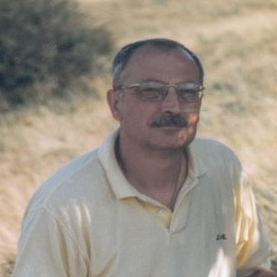Porphyrins Chemistry in Material Science
A special issue of Materials (ISSN 1996-1944). This special issue belongs to the section "Materials Chemistry".
Deadline for manuscript submissions: closed (31 August 2021) | Viewed by 4090
Special Issue Editor
Interests: porphyrins chemistry; electrochemistry and organometallic chemistry; electron transfer on models with porphyrins and C60; catalysis by metalloporphyrins
Special Issues, Collections and Topics in MDPI journals
Special Issue Information
Dear Colleagues,
Porphyrins, metalloporphyrins, and related macrocycles are important molecules in several fundamental studies and for applications in important fields. Natural and synthetic porphyrins have been studied for more than a century, and their structures were elucidated by the most important chemists who obtained the Nobel prize for their studies. Recently, such macrocycles have been widely used as active receptors in sensors, as catalysts, in photovoltaic scaffolds, in non-linear optics, in photodynamic therapy, etc. Recently, investigations on materials chemistry have considered more such molecules for new exciting studies. This issue in Materials aims to focalize the attention of the scientific community involved in searching of new materials on these macrocycles, and we hope that this call will encourage further studies on the properties of this class of molecules.
Prof. Dr. Pietro Tagliatesta
Guest Editor
Manuscript Submission Information
Manuscripts should be submitted online at www.mdpi.com by registering and logging in to this website. Once you are registered, click here to go to the submission form. Manuscripts can be submitted until the deadline. All submissions that pass pre-check are peer-reviewed. Accepted papers will be published continuously in the journal (as soon as accepted) and will be listed together on the special issue website. Research articles, review articles as well as short communications are invited. For planned papers, a title and short abstract (about 250 words) can be sent to the Editorial Office for assessment.
Submitted manuscripts should not have been published previously, nor be under consideration for publication elsewhere (except conference proceedings papers). All manuscripts are thoroughly refereed through a single-blind peer-review process. A guide for authors and other relevant information for submission of manuscripts is available on the Instructions for Authors page. Materials is an international peer-reviewed open access semimonthly journal published by MDPI.
Please visit the Instructions for Authors page before submitting a manuscript. The Article Processing Charge (APC) for publication in this open access journal is 2600 CHF (Swiss Francs). Submitted papers should be well formatted and use good English. Authors may use MDPI's English editing service prior to publication or during author revisions.
Keywords
- porphyrins and metalloporphyrins
- sensors
- non-linear optics
- PDT therapy
- photovoltaic materials
- photonics
Benefits of Publishing in a Special Issue
- Ease of navigation: Grouping papers by topic helps scholars navigate broad scope journals more efficiently.
- Greater discoverability: Special Issues support the reach and impact of scientific research. Articles in Special Issues are more discoverable and cited more frequently.
- Expansion of research network: Special Issues facilitate connections among authors, fostering scientific collaborations.
- External promotion: Articles in Special Issues are often promoted through the journal's social media, increasing their visibility.
- Reprint: MDPI Books provides the opportunity to republish successful Special Issues in book format, both online and in print.
Further information on MDPI's Special Issue policies can be found here.






